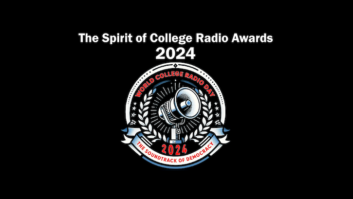
The author is vice president of revenue for Waymark.
Two and a half years ago, radio had an AI awakening. Station managers, sales directors and creative teams suddenly found themselves staring at the kind of technology that promised to transform everything from writing ad copy to automatic voice synthesis.
The questions were immediate: Would this actually work? Could AI maintain the quality and authenticity that radio demands? And perhaps most importantly: What would it mean for them?
Today, we’re starting to see answers. The sharpest stations aren’t just experimenting anymore. They’re using AI to fundamentally expand their operations and compete in ways that were impossible even 30 months ago.
The spec game
For decades, radio sales operated under a constant constraint: Creative took time … days, sometimes weeks, depending on production schedules and creative availability. Sales teams learned to pitch conceptually, relying on words and existing samples to paint a picture of what a campaign might look like.
AI has blown up that model entirely.
Sales teams can now generate complete commercials with logos, footage, voiceover, music and professional animation in under five minutes. Not rough drafts or placeholder content — broadcast-ready commercials that clients can see, approve and air immediately.
The impact on sales cycles has been dramatic. Stations report that prospects who might have taken weeks to make decisions are now closing deals in days. The reason isn’t just efficiency; it’s psychology. When a local restaurant owner sees or hears their storefront in a polished 30-second spot, with their name and a professional voiceover plugging their weekend specials, that’s when the conversation shifts from hypothetical to immediate.
Why video matters
Here’s where it gets interesting for radio specifically: AI isn’t just making audio production faster. It’s giving radio stations the ability to compete in video advertising for the first time.

Video advertising is the fastest-growing format in the industry, but many radio stations have treated it like someone else’s territory. The production costs, technical requirements, and creative expertise needed to produce quality video content have simply been too high for most local and regional stations to justify.
AI-powered video generation changes that calculation completely. Stations can now walk into advertiser meetings with comprehensive multimedia strategies. They’re not just selling 15- and 30-second radio spots anymore. They’re presenting coordinated campaigns that include on-air spots, streaming video ads, and social media content, all effortlessly generated from the same source material.
This represents a fundamental shift in how radio stations can position themselves in the advertising ecosystem. Instead of competing solely on reach and frequency metrics, they can offer the kind of full-service creative capabilities that advertisers previously had to source from multiple vendors, or just do without entirely.
The quality question
Transparently, the early skepticism about AI-generated content wasn’t unfounded. The first iterations often produced generic, sometimes bizarrely flawed, and obviously synthetic content that simply didn’t live up to established standards.
But the current generation of AI tools has largely evolved beyond these problems, particularly when deployed thoughtfully. The key insight that successful stations have discovered is that AI works best under human oversight as a complement to creativity, not a wholesale replacement for it.
[Related: “Broadcasters Must Prepare to ‘Win the AI Race’”]
The most effective implementations we’ve seen involve sales teams and creative directors who understand how to prompt AI systems effectively, how to incorporate their local market knowledge and approaches, and how to maintain brand consistency across automatically generated content.
This requires training and process development, but stations that invest in building these capabilities are seeing dramatic returns. They’re able to produce significantly more creative content without expanding their teams, respond to last-minute advertiser requests that would have been impossible to fulfill previously, and offer services that differentiate them from competitors who are still operating under limiting traditional constraints.
Numbers don’t lie
The business impact here extends far beyond faster production times. Stations using AI video creation report tangible improvements in their spec-to-close conversion rates. The ability to show real, produced content rather than simply describe concepts has proven to be a powerful new capability.
More importantly, many stations are discovering that video-enabled sales pitches allow them to compete for budgets they were simply excluded from before. Local businesses that might have allocated ad dollars to digital agencies or larger multimedia platforms now have reason to keep those budgets with their local radio partners.
This is particularly significant in smaller markets, where local businesses often have few marketing resources and even less time. These owners prefer working with a single, trusted vendor who can manage multiple aspects of their advertising strategy for them. That’s an ideal scenario for a local radio team.
What’s next
The trajectory of AI development suggests several emerging opportunities for radio stations willing to stay ahead of the curve:
- Robust, purpose-built platforms are becoming advanced enough to turn a single creative brief into cohesive campaign content for on-air, streaming, social media and digital display advertising simultaneously.
- A new wave of self-service platforms allows advertisers to create their own content while maintaining station branding and quality standards. This creates opportunities for new revenue streams while reducing the direct labor required for smaller accounts.
- Rapid turnaround times are an asset. With instant production, business owners who need eleventh-hour marketing are now viable prospects and fast-converting revenue generators.
The strategic imperative
Radio has always been adaptable. The industry has survived the transition from AM to FM, embraced digital streaming, and found ways to remain relevant in an increasingly fragmented media world.
AI video represents the next phase. At Waymark, we’ve seen the proof firsthand. Stations like our partners are mastering cutting-edge tech like our ad creator; and in doing so, they aren’t just improving their operational efficiency. They’re expanding their addressable market and positioning themselves as first movers and full-service marketing partners rather than single-channel vendors.
The technology is here. The tools work.
The next step? Take the leap and capture the competitive advantage that AI-powered evolution provides.
[Read More Radio World Stories About Artificial Intelligence]







